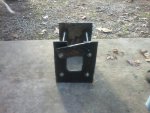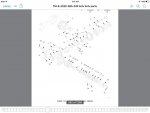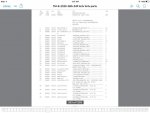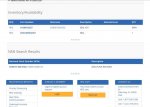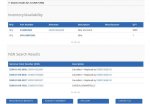Got the pinion seal changed today. I've made some notes and taken some photos in case someone else has to do it.
Yesterday, in preparation to pull the flange/yoke, I made up a puller to allow use of a hydraulic jack. Thanks NDT for the warning so I could be prepared. The job went well with a little preparation (no, not Preparation H).
The parts diagram is in manual TM9-2320-365-24P (available here on SS in the manual section). See page 366, and the following 2 pages for part numbers.
The part numbers are:
- #21: Seal, plain, encased, A-1205-F-2502
- #22 Seal, plain, encased, A-1205-U-2257
I pre-ordered the two seals from Find-it Parts. They have been a good source for me, and prices are better than many other sources.
There are three hurdles:
- Pulling the caps off the U-joints
- Loosening the big pinion nut
- Pulling the flange/yoke.
Pulling the caps is no big deal if you think to use a big mallet to drive the whole driveshaft and fixed yoke toward the cap you want to pop out. Bump out one then the other using the U-joint as the push tool.
The big nut was on there seriously tight, but, a heavy wrench can be put on the nut (one I had was a drive-on-fit, but shims could be used) and held in place. The wrench could even be lashed on around the flange. Let the handle come up under the left spring pack to hold backup while you turn the tires on the front axle. Turn the tires by putting the tranny in 'Mode' and backing up. 'Mode' is required or the front shaft will just spin. The front driveshaft will turn as the rear one turns so has to be suspended to allow rotation. The big nut popped loose with a truck-shaking thunk. There must have been some Locktite or worse on it.
The puller I made worked great on the flange.
The bottle jack is a 6-ton and I was at MY limit of pull before the flange started moving. It had to be pulled almost all the way off with the jack.
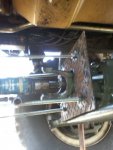
The seal was in such bad shape it pulled out with the flange. It is supposed to be a drive-fit into the nose of the pinion bearing housing.
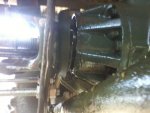
This differential only had the #22 seal. There was no #21. [edit: yes there was!! it was destroyed! read on] I put in #21 when it went back together. [edit: there WAS a #21 seal in there. It was destroyed beyond recognition.]
This photo shows a new seal #21 pushed onto the sealing surface of the flange. #21 runs on #22, face to face. #22 holds fluids in the diff, #21 keeps fluids, like water, out of the diff.
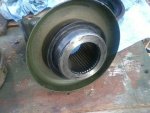
The photo of the flange puller ended up at the bottom of the page.
When you put the big nut back on, it needs a little RTV sealant on it's inner surface to keep water from creeping under the flange into the splines. The shim pack behind the bearing unit housing also needs a film of sealant. Be sure to not damage those shims as the housing is removed.





